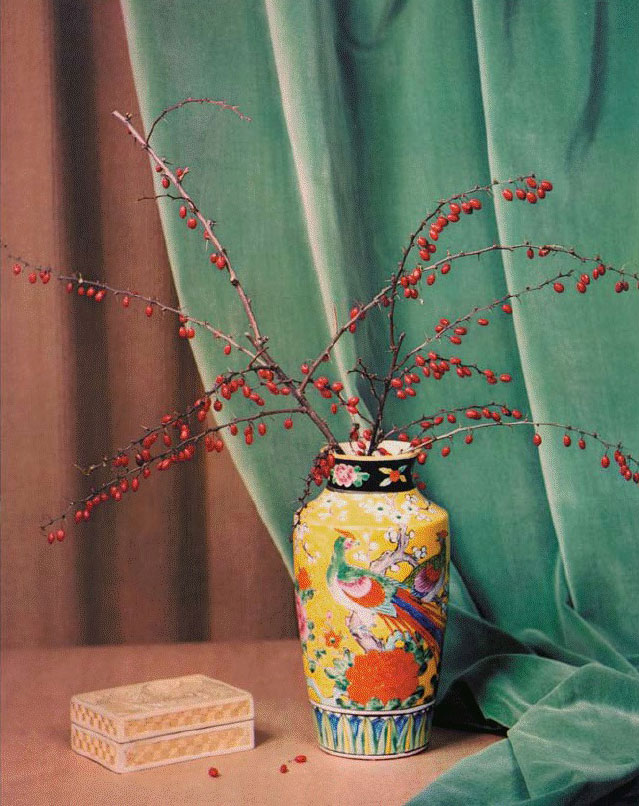- Relief printing
- Intaglio and planographic printing
- Color printing
- Bits and pieces
- Early photography in silver
- Non-silver processes
- Modern photography
- Color notes
- Color photography
- Photography in ink: relief and intaglio printing
- Photography in ink: planographic printing
- Digital processes
- Where do we go from here?
Dye transfer
 Dye transfer print. Adolf Fassbender. Winter Berries. 1946. 15 3/4 x 12 5/8" (40 x 32 cm). The Museum of Modern Art, New York. Gift of Richard Benson © The University of Arizona Foundation. This dye transfer print is not only quite large but also has a beautiful semimatte surface, quite different from the normal gloss used for dyes. Manufacturers have ceased producing the materials for dye transfer prints, so when dwindling private stocks are exhausted, the process will belong to the past.
Dye transfer print. Adolf Fassbender. Winter Berries. 1946. 15 3/4 x 12 5/8" (40 x 32 cm). The Museum of Modern Art, New York. Gift of Richard Benson © The University of Arizona Foundation. This dye transfer print is not only quite large but also has a beautiful semimatte surface, quite different from the normal gloss used for dyes. Manufacturers have ceased producing the materials for dye transfer prints, so when dwindling private stocks are exhausted, the process will belong to the past.
The final chemical method using individual separations to make color photographic prints was called “dye transfer.” The process was designed to make superb color prints from transparencies rather than from negatives. The color original was placed in an enlarger and a set of three filtered separations was made from it. These new negatives were then exposed by contact onto a new sort of film called “matrix” film. This gelatin-coated material was exposed from the back, and processed to remove unexposed gelatin, in such a way that the remaining layer was in relief, much like a carbon print. Exposing the material from the back cut out the old carbon-print step of a second transfer to correct the reversal of the image.
Each of the resulting positives often called “matrices” was soaked in a dye of the correct subtractive color, and sequentially rolled into contact with a specially prepared receiver sheet, transferring the dye from each matrix over to the receiver. The whole operation had to be done with accurate registration, which required special easels and register pins to make sure everything fit properly. The gelatin in the matrices never moved; it remained where it was. Only the dyes transferred over to form the final image. A good dye transfer could be the best of all chemical color prints. Its quality came from the dyes used and from the physical appearance of the surface, which looked as though the image had somehow been built up, giving the print a physical presence that modern chromogenic color prints cannot match. I hedge a bit in my praise of the dye transfer process because a bad dye can be awful, but because the process was always touted as being the best, some people think even the bad ones are OK. This is a continual problem with printing processes: like celebrities, they get a reputation, and before too long this reputation can cloud the reality of the process that underlies it. Dye transfer prints were expensive and rare, and could be as bad as anything else. When they did their job well they were, like Marilyn Monroe, better than anything else around.

